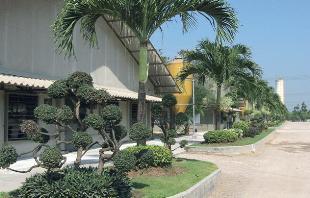A look into the future of pig health

The future of animal health can be a somewhat grey area as future animal diseases are simply hard to predict. It is possible, however, to point out some criteria in relation to animal health that will get more important for pork producers all around the world.
By Dr Gerald Behrens, head of Corp. Marketing Food Producing Animals, Boehringer Ingelheim Animal Health, Germany
It’s best to start off with a disclaimer: this text is not an extract of peer reviewed literature nor is it the result of a PhD thesis. It’s the pragmatic approach to predict the future of pig health based on 20 years of industry experience paired with some gut feeling. Even more so, the author has to admit a lack of visionary thinking, as the assumption is that by 2025 we will not enjoy disease resistant pigs, nor ideal housing systems and we will still feed our pigs on least cost rations. So with this is mind what can we expect?
Globalisation
Like it or not, globalisation is a reality in many sectors of our every day life and the global pig world is already here. Be it live animals, carcasses, information/technology, investments or diseases, whatever crosses the border carries certain health implications. The disease-free status of herds/regions/countries has become a key competitive advantage for exports, whereas the outbreak of disease can destroy a whole industry over night.
The blooming Taiwanese pig exports to Japan became a victim of Foot-and-Mouth Disease (FMD) in the mid-nineties and these days the novel influenza A virus (H1N1) has the potential to destroy long term export markets for many North American as well as European economies.
The US swine industry alone is expecting to lose $2.2 billion in 2009 based on the H1N1 related export crunch. As a consequence, the discovery and prevention of emerging/re-emerging diseases will deserve more attention among scientists and the animal health industry.
One might argue that this has already been the case for the last hundred years, but in the future, the need for success will be more urgent and a win will be more rewarding. The swine industry that prevents and manages infectious diseases better than others will win the global export race.
Consumers will demand more
No serious stakeholder in the food chain would question the fact that pork today is safer than ever before. Also, the quantity available to many consumers in the developing world has improved significantly within the last decade due to improved local production and global trade. This is the factual part of the equation but what about the consumer perception? A 2006 European Union risk perception survey among consumers revealed some
eye-opening opinions.
eye-opening opinions.
These results leave much room for interpretation but the obvious conclusion is that a risk assessment among the readers of Pig Progress would generate substantially different results because it would be primarily based on facts and science and to a lesser extent on emotions.
Nevertheless, food is a very emotional subject for our consumers and they simply want to feel good about the pork they eat. So anything animal health can do at any step of the food chain to make consumers feel better will reduce their fear and improve the likelihood of buying more pork in the future. Measures to reduce the overall antibiotic consumption, reduce the risk of carcass contamination and improve the welfare of pigs, integrated into a smart communication concept, will move our industry closer to consumer demands.
Consequently, the swine industry that matches consumer perception and demands better than others will win the global export race.
Strategic concepts versus quick fix
The future race for export markets and consumers’ minds will be won by those systems that effectively move away from the single farm quick fix approaches to coordinated and transparent strategic health concepts. Some recent developments provide hope that the latter concepts are gaining support:
* in the US and Mexico producers and veterinarians join forces in regional PRRS control projects.
* immunocastration products and licensed pain control products are recently becoming available to address welfare issues around piglet castration.
* highly effective PCV2 vaccines have set a new standard in viral disease management. Now upcoming PCV2 combination vaccines will further expand the armoury of veterinarians. This offers increasing opportunities to replace in-feed antibiotic programmes by strategic vaccination, addressing one of the key consumer concerns.
Finally the future will be bright for those swine industry players who embrace the opportunity of change because Sir Isaac Newton can’t be wrong:
“An object at rest tends to stay at rest and an object in motion tends to stay in motion.”
Source: Pig Progress Volume 25 nr 9











